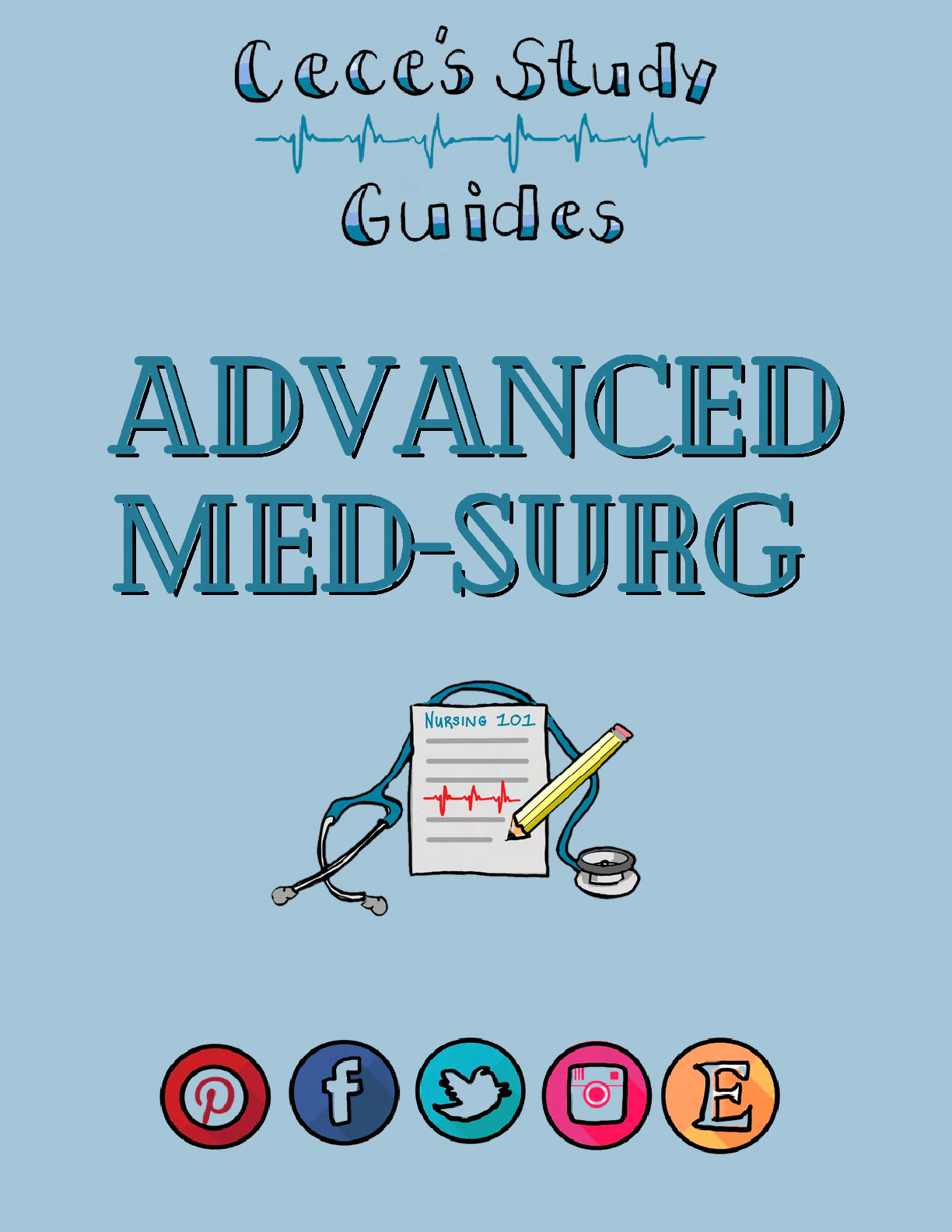Marketing > STUDY GUIDE > MKT 3210 Marketing Exam 1 Study Guide (All)
MKT 3210 Marketing Exam 1 Study Guide
Document Content and Description Below
MKT 3210 Marketing Exam 1 Study Guide Chapter 1: Marketing – the aim of marketing is to make selling superfluous… to know and understand the customer so well that the product fits them and sel... ls itself First and foremost about satisfying consumer needs – but also consider that the seller must make a profit The activity, set of institutions, and process for creating, communicating, delivering, and exchanging offerings that have value for customers, clients, partners, and society at large o Deliver value to everyone the transaction affects Marketing Management – the art and science of choosing target markets and getting, keeping, and growing customers through creating, delivering, and communicating superior customer value The Four Ps – the marketing mix 1. Product a. Quality, features, brand, packaging, size, warranty, after sales 2. Price a. Tariff, sale, discount, sales terms, credit terms 3. Promotion (Communication) a. Advertising, sales force, promotion, PR 4. Place (Distribution) a. Distribution channel, area, point of sale, warehouses, means of transportation Gaps – what is in between the buyer and the seller Spatial Separation – place utility (where needed) Temporal Separation – time utility (when needed) Value Separation Perceptual Separation The Production Era (1900-1930) Build it cheap Make it widely available Henry Ford, Vanderbilt, Rockefeller, Carnegie, Morgan Production Orientation – a management philosophy that emphasizes the most efficient ways to produce and distribute products The Sales Era (1930-1960) Creative selling is what will drive the market to consume Selling Orientation – a managerial view of marketing as a sales function, or a way to move products out of warehouses to reduce inventory The Relationship Era (1960-2000) The “marketing concept” all begins with satisfying consumer needs Consumer Orientation – a business approach that prioritizes the satisfaction of customers’ needs and wants Societal Marketing Concept (2000-present) – adds the element of social responsibility and helping, not hurting, society as a wholeTriple Bottom Line Orientation A business orientation that looks at financial profits, the community in which the organization operates, and creating sustainable business practices Still emerging; the newer way of looking at business by combining performance across the three dimensions (financial, social, environmental) Industry – a collection of sellers Market – a collection of buyers/consumers Challenges and Opportunities of Marketing Today: Power shift to consumers Increase in product selection Changing value propositions Shifting demand patterns Privacy, security, and ethical concerns Chapter 2: Environmental Scanning Technology (1920s) Demographic (1950s) Social-Cultural (1980s) Competitive (1990s) Global (2000s) Marketing organizations are “open systems” – the one prevailing constant is CHANGE Ignoring change leads to failure Control what you can – always understand what is happening Seeking information that helps: Better understand current customers Understand how consumer decisions are made Understand the most valuable customers and understand their needs Understand the competition Analyze the macroenvironment Fads – unpredictable, short-lived, without significance Trends – direction, sequence of events with momentum o Megatrends Aging Boobers Delayed retirement Changing nature of work Greater educational attainment Labor shortages Increased immigration Rising Hispanic influence Shifting birth trends Environmental Sectors – helps divide and organizeo Demographic (1) Population characteristics Age Education Ethnicity Household structure Geographical residence Combinations o Economic (2) Markets require people and money Tracking income, debit/credit, interest rates, savings, outsourcing, etc. Recognition of economic “cycles” Prosperity Recession Recovery o Social-culture (3) Impact of societal views and norms on consumer tastes and preferences How do we as consumers view: Ourselves Others Organizations Society Nature The universe American Values Self-sufficiency Upward mobility Work ethic Equality Individualism Achievement orientation o Natural (4) The newest addition to the sectors How are we running out of ingredients? Cost and sources of energy Concerns over pollution o Technological (5) “innovation: Technology is simply a learned way of doing something More than just “high tech” Marketing Manager’s Role” Monitor technological changes and utilize to improve the firm’s offerings o Doesn’t have to be within the industry Persuade consumers that improvements make for a better product o Political-legal (6) Laws, government agencies, and pressure groups Purpose: Ensure competition Protect consumers Preserve business property Trends Decrease in business legislation Increase in special-interest groups o Competitive (7) Was hottest are of the 90s – still very active Reduction in trade barriers Decreased population but growth in online retailers “generic competition” Chapter 3: Business Planning – An ongoing process of making decisions that guides the firm both in the short and long terms Simply going through the planning process better prepares an organization for decision making even though the plan itself may change over time o Encourages management to think ahead systematically o Improves (forces) interaction between company managers o Helps organization sharper its objectives and policies o Provides for better coordination between functional areas o Provides clearer performance standards for controls Three levels of planning: 1. Strategic Planning – the managerial decision process that matches the firm’s resources and capabilities to its market opportunities for long-term growth 2. Functional Planning – a decision process that concentrates on developing detailed plans for strategies and tactics for the short term, supporting an organization’s long-term strategic plan 3. Operation Planning – a decision process that focuses on developing detailed plans for the day-to-day activities that carry out an organization’s functional plans Strategic Marketing Management – answers three main questions: 1. Who are we? 2. Where are we going? 3. How do I get there from here? Two major components of the process: o Planning o Execution The Marketing Plan:1. The Situation Analysis a. Internal Constraints i. Objectives of the organization ii. Financial resources iii. Strengths and weaknesses iv. Cost structure of the industry b. External Constraints i. Political-Legal ii. Economic iii. Social/Demographic iv. Technological v. Natural vi. Geographical 2. Problems and Opportunities 3. Strategy and Tactics a. What is our business definition? i. Should be: 1. Broad enough so that new market opportunities are not missed 2. Narrow enough that one doesn’t over extend the organization beyond its capabilities 3. Focused on a market need, NOT a product b. Where are we going? i. Good objectives should be: 1. Specific – state exactly what is to be accomplished 2. Measurable – designate a quantitative level of achievement 3. Time-based – place a limit on when the specified level is to be achieved c. Objectives i. Organizations typically distinguish between: 1. Financial Objectives 2. Marketing Objectives d. A strategy is what will be done (long-term) e. A tactic defines how it will be done (short-term) Product-Market Growth Matrix Boston Consulting Group Portfolio Matrix 4. Implement and Control the Market Plan a. Outlines the plans for monitoring and adjusting implementation of the plan [Show More]
Last updated: 1 year ago
Preview 1 out of 6 pages
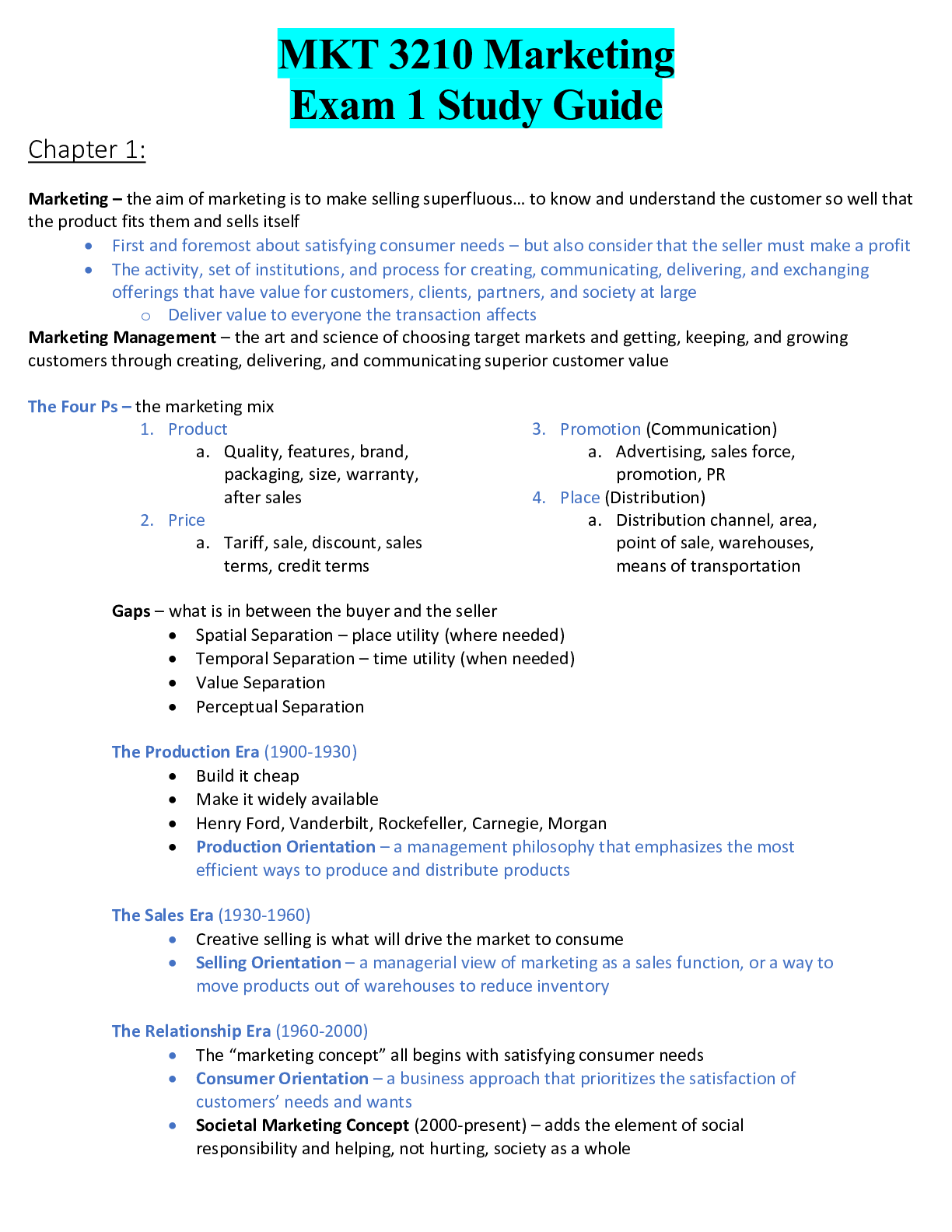
Reviews( 0 )
Document information
Connected school, study & course
About the document
Uploaded On
May 16, 2021
Number of pages
6
Written in
Additional information
This document has been written for:
Uploaded
May 16, 2021
Downloads
0
Views
83

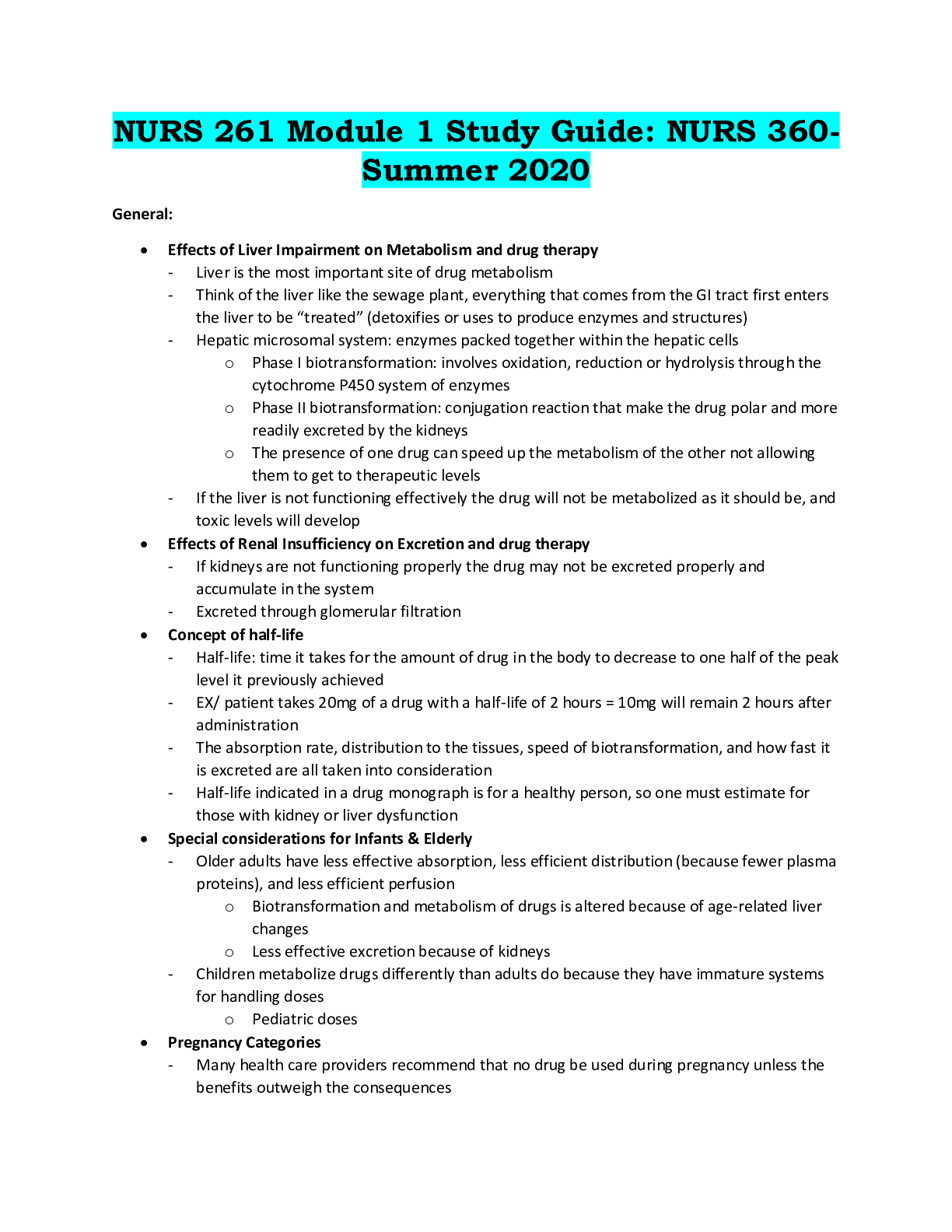
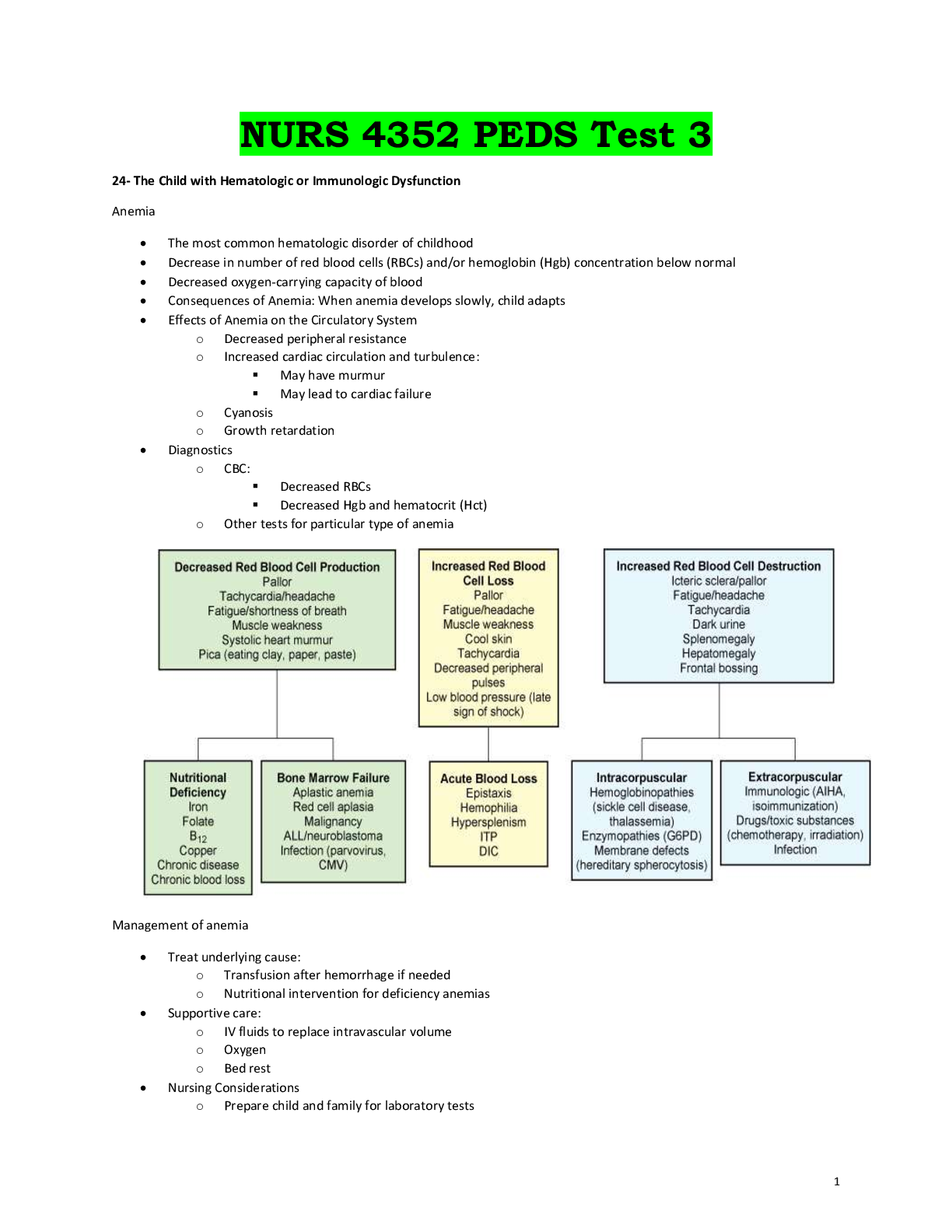
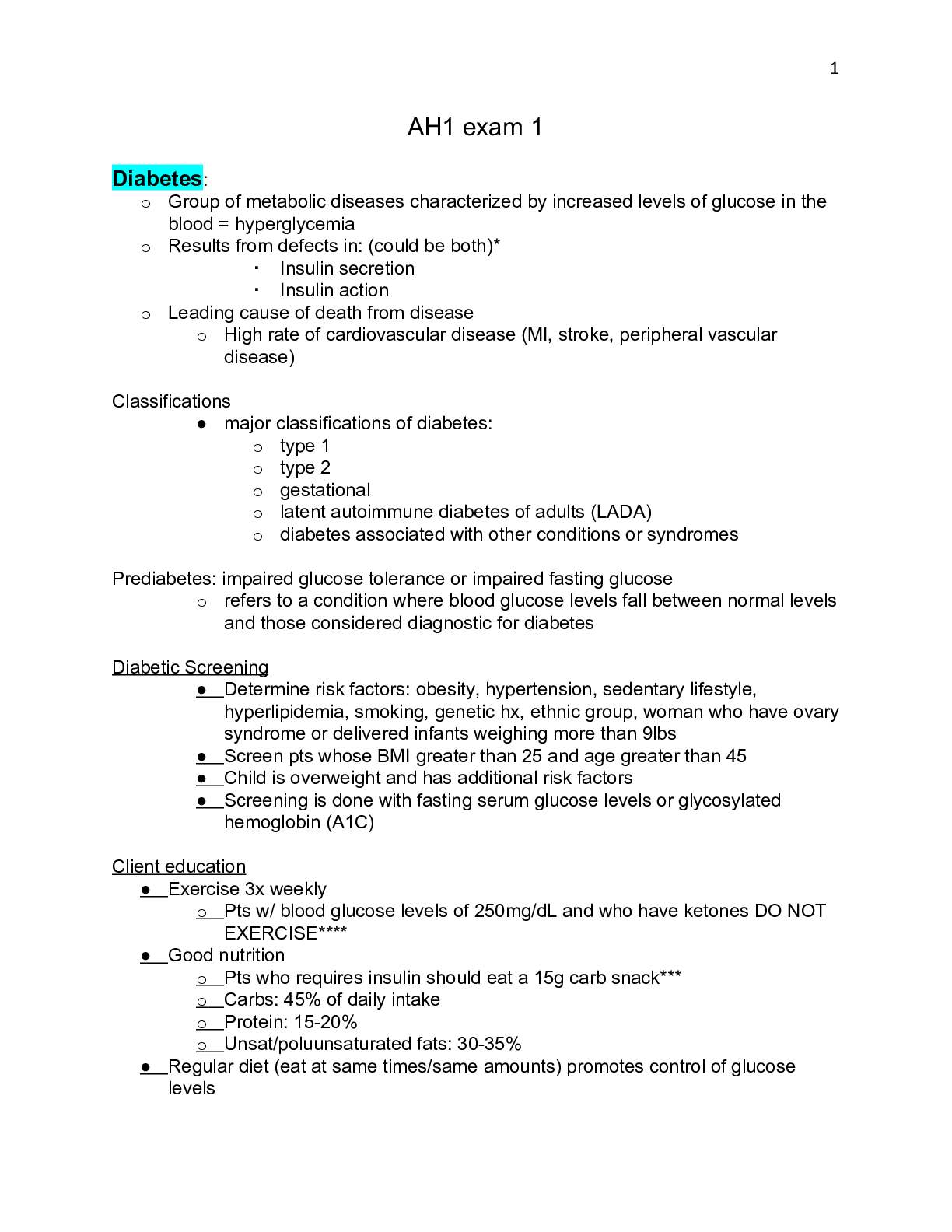
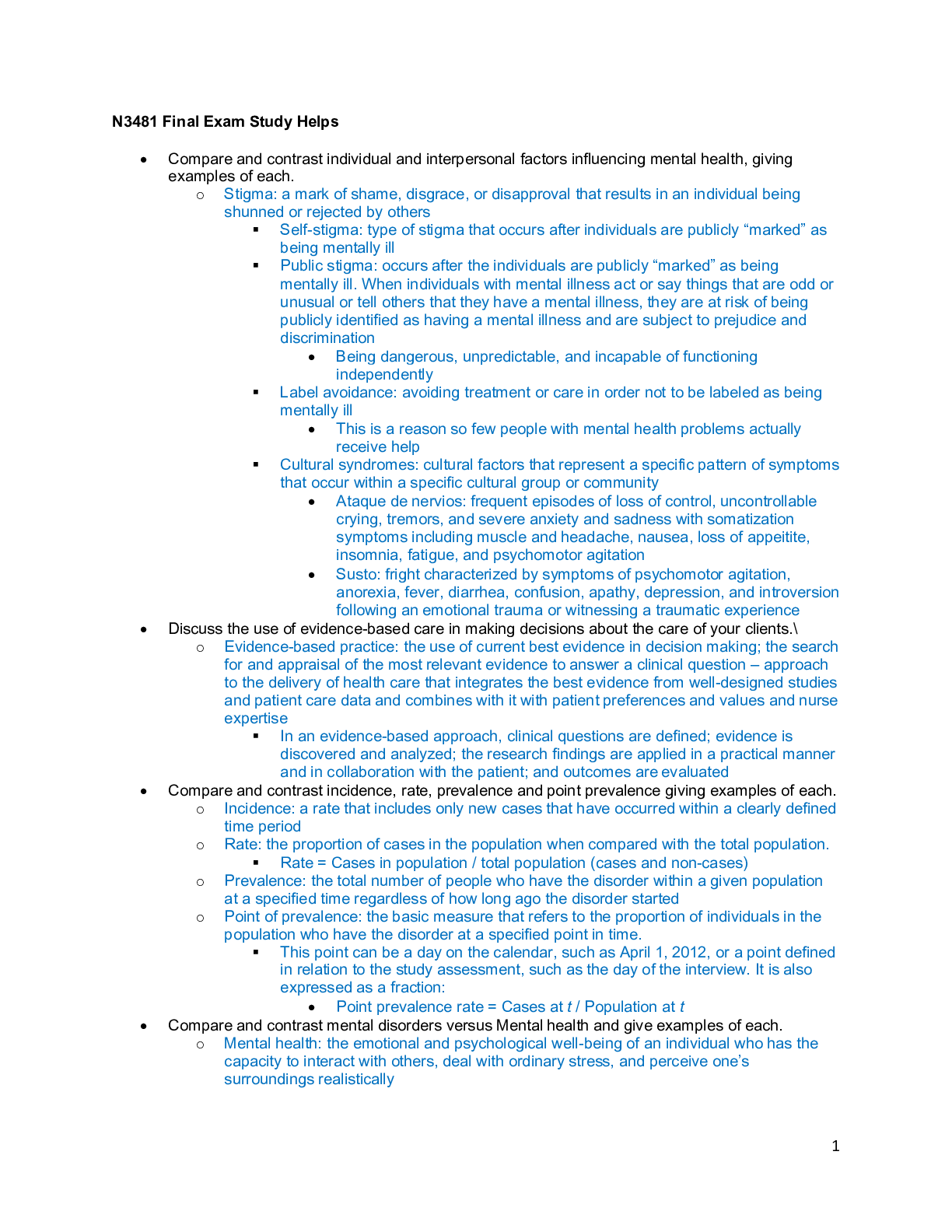
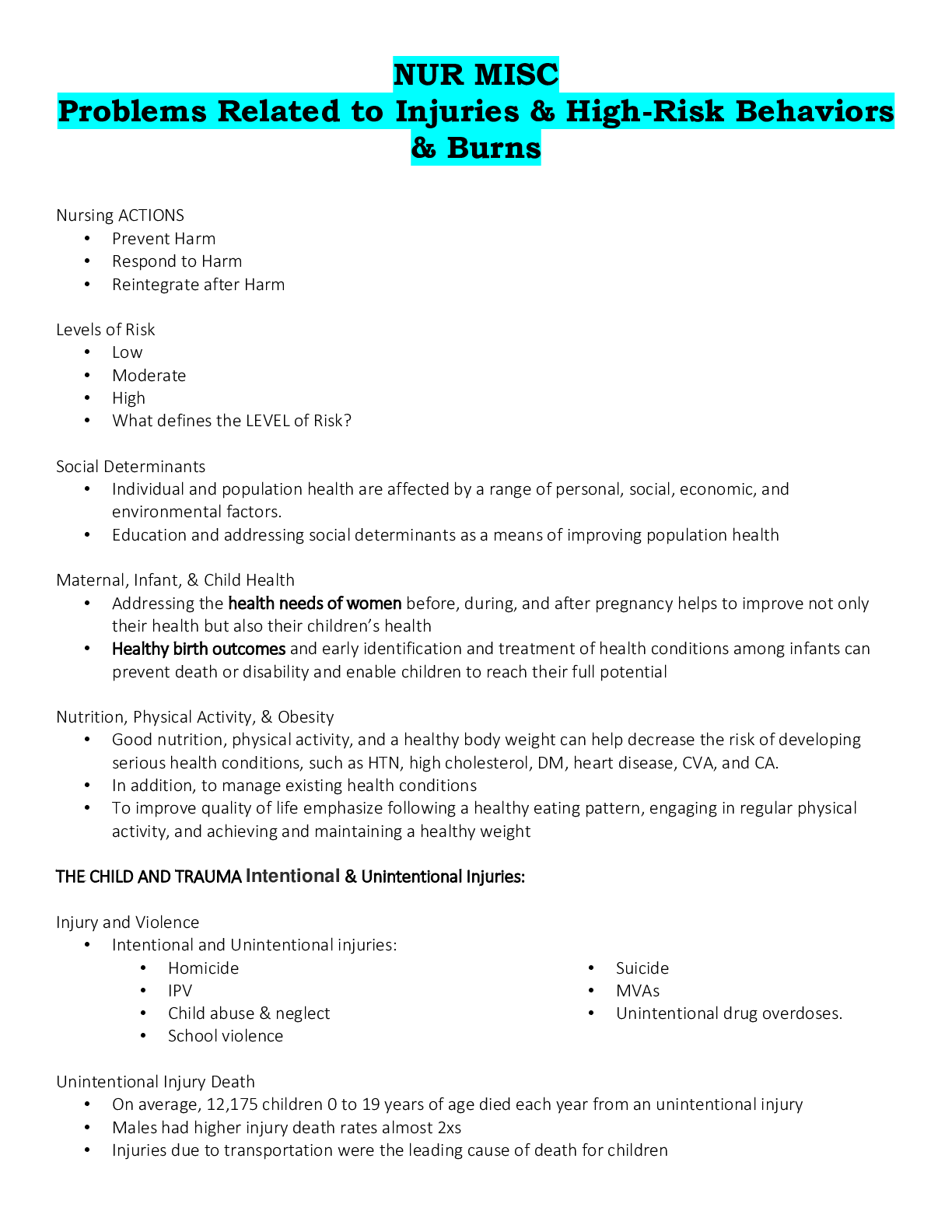
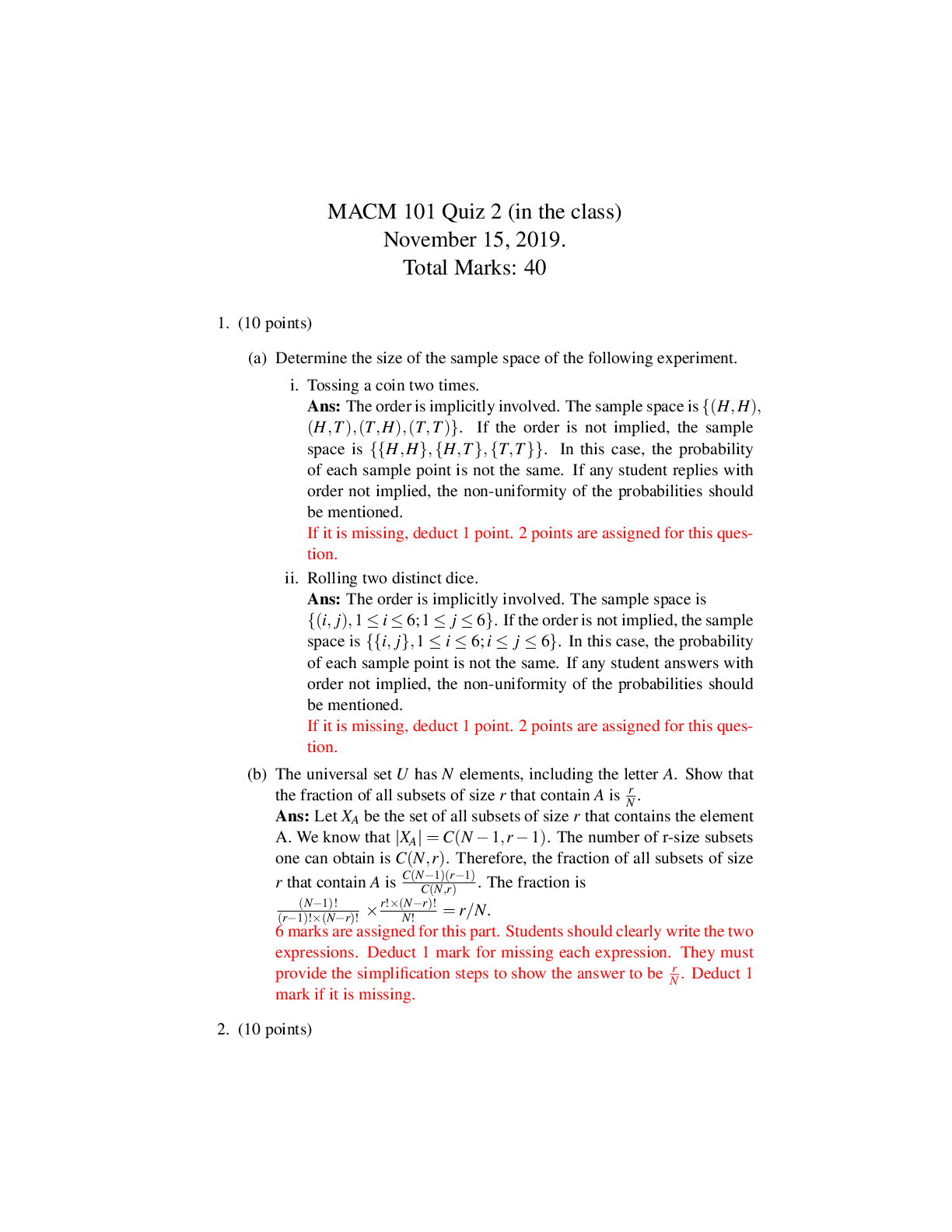
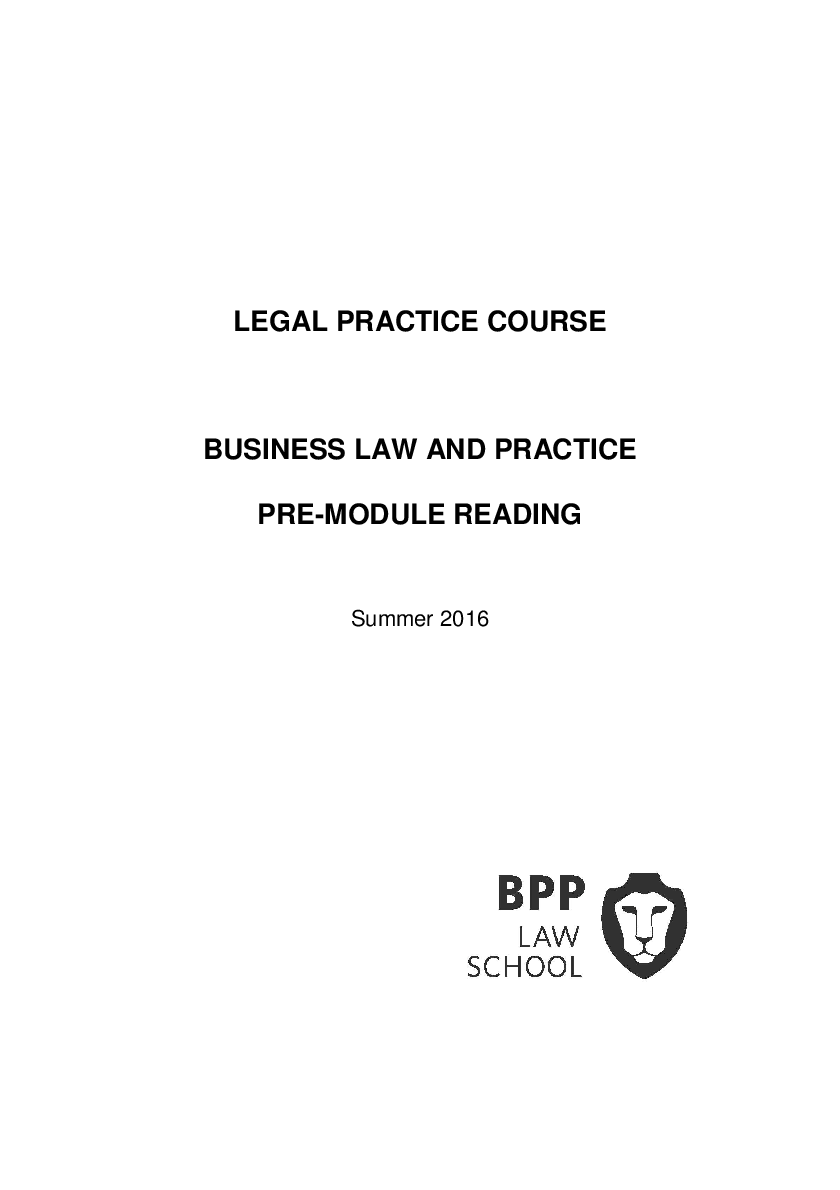
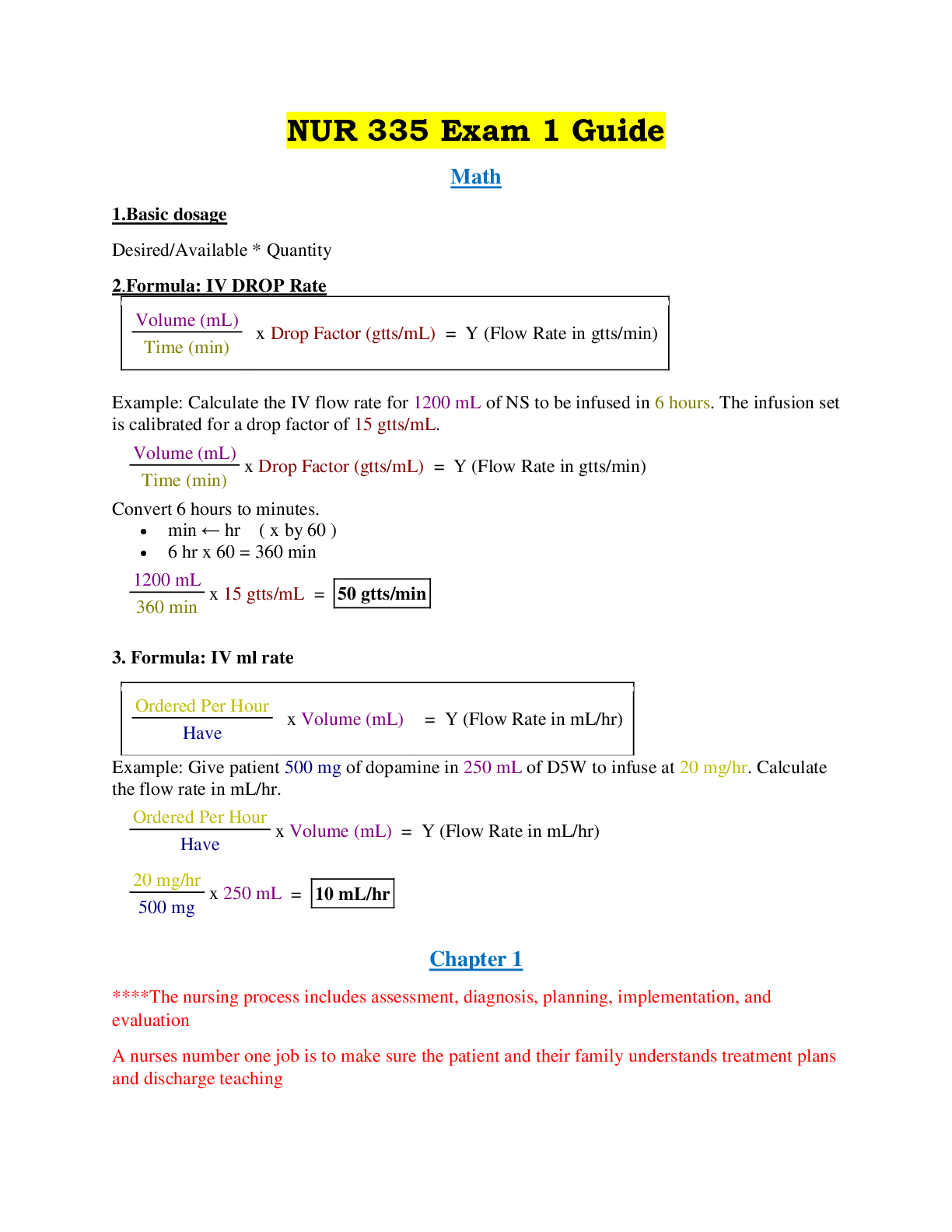

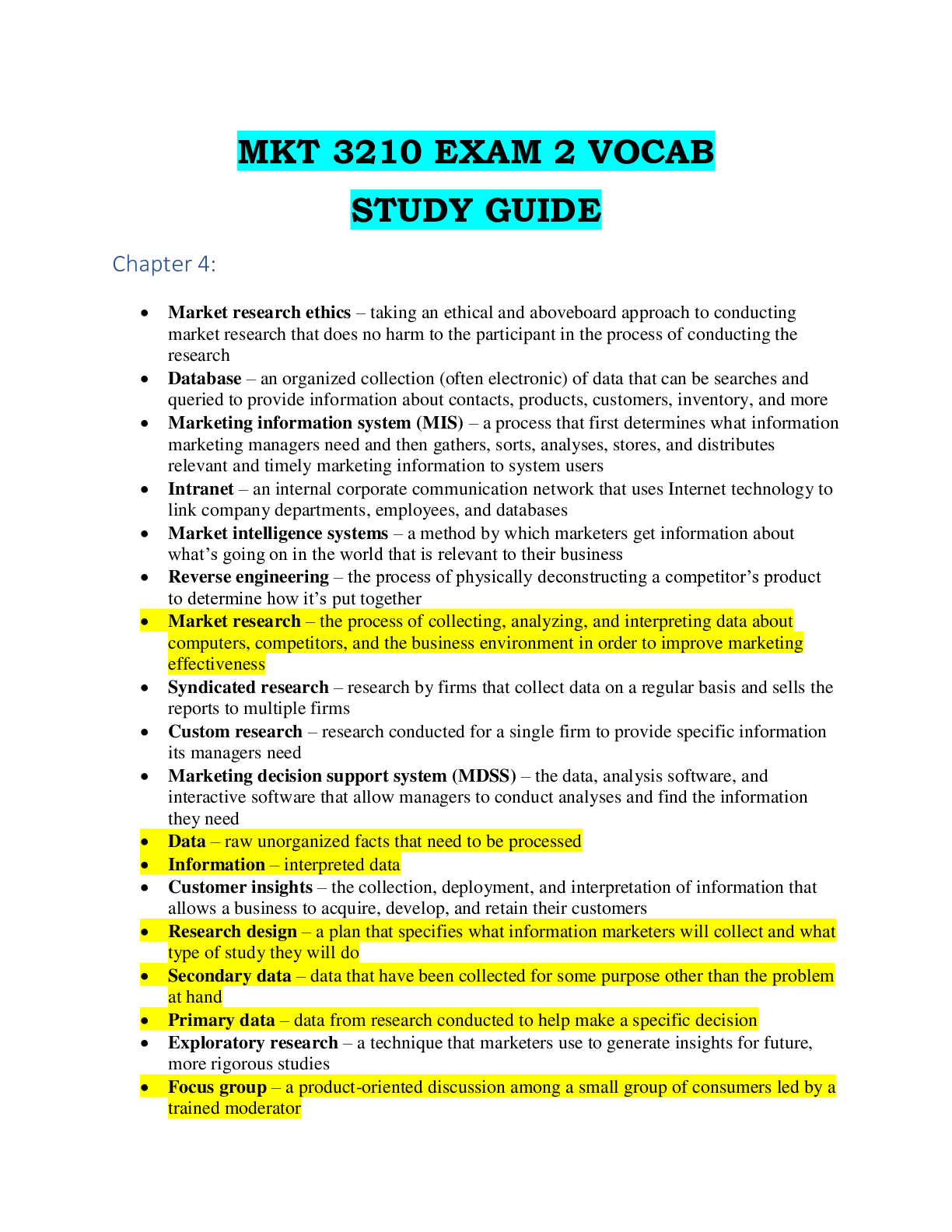
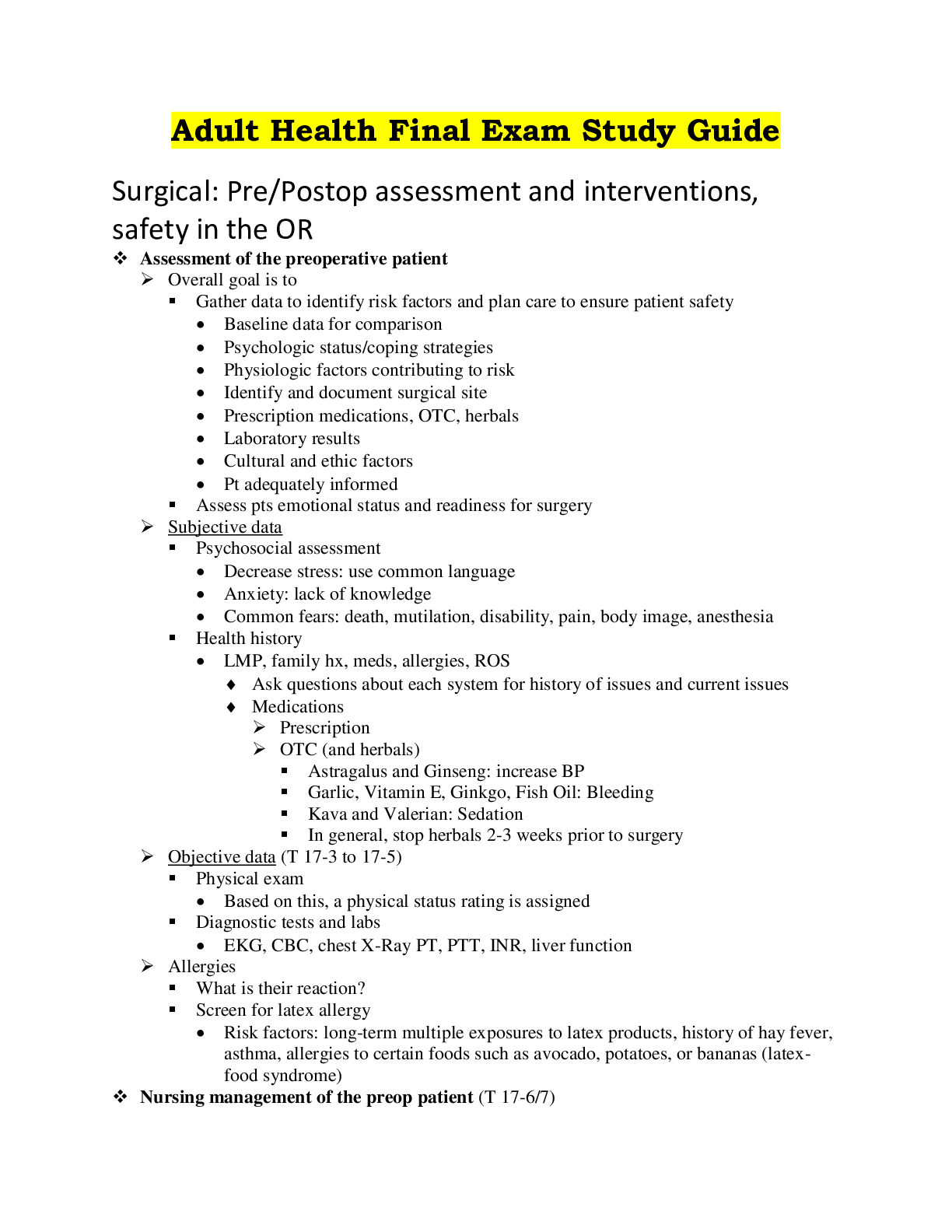
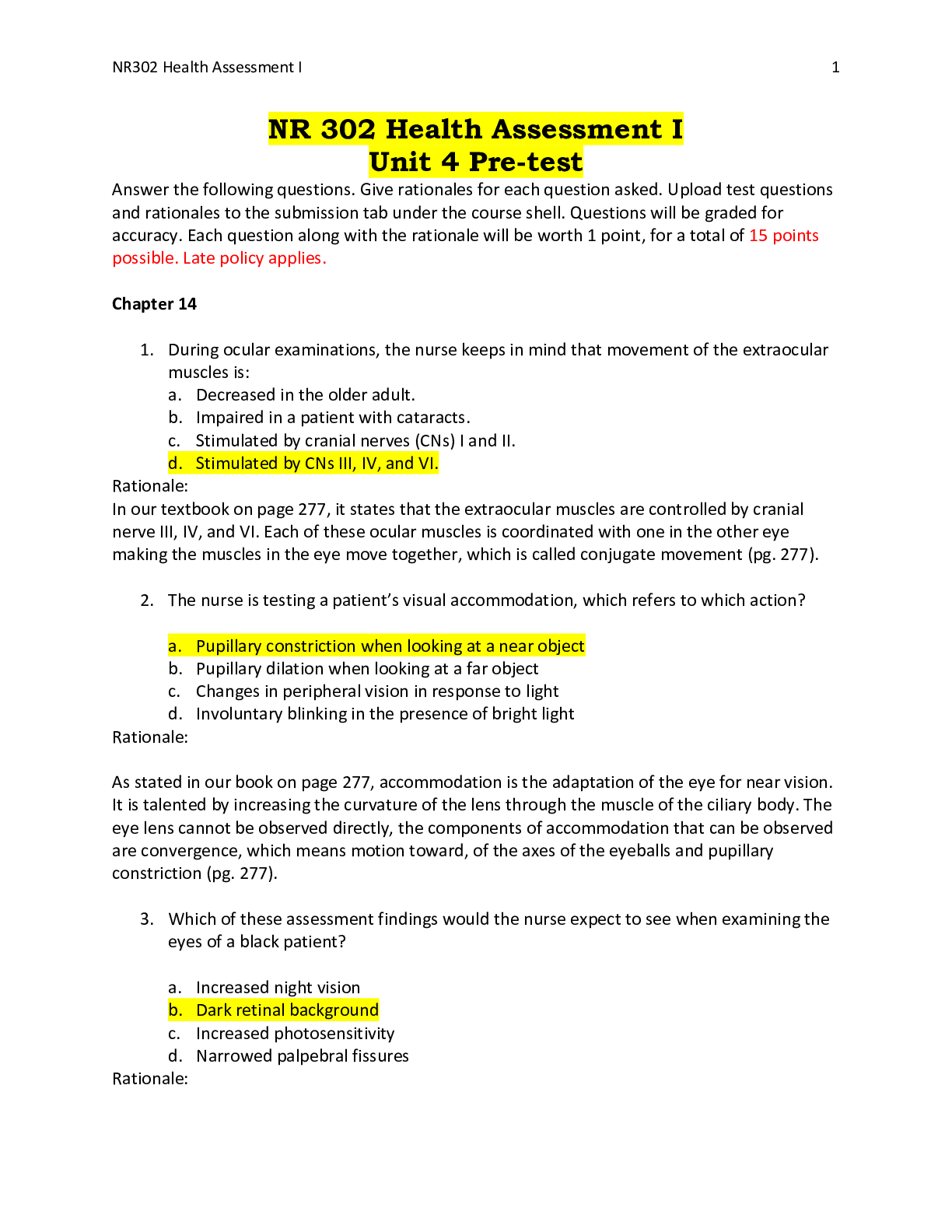
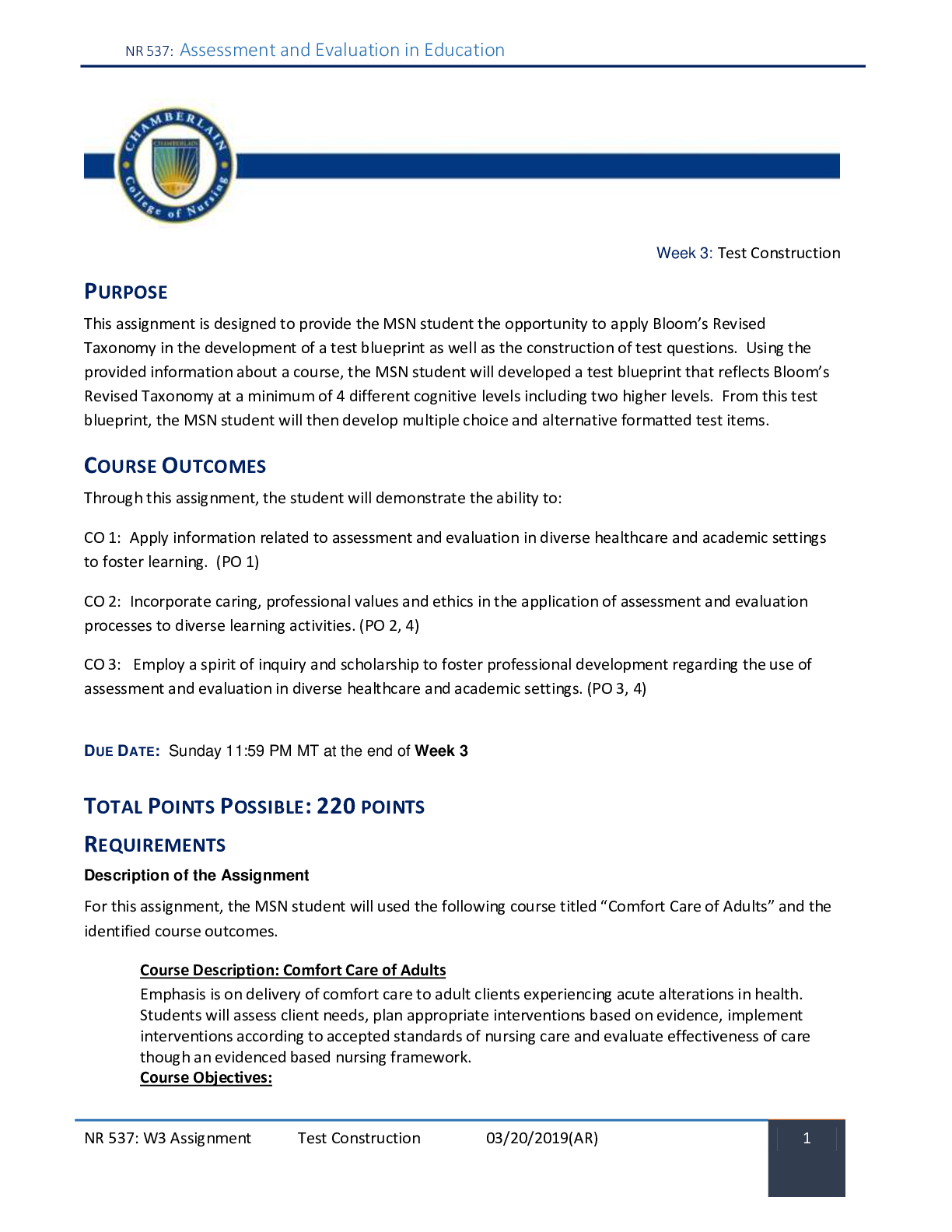

 (4).png)
.png)
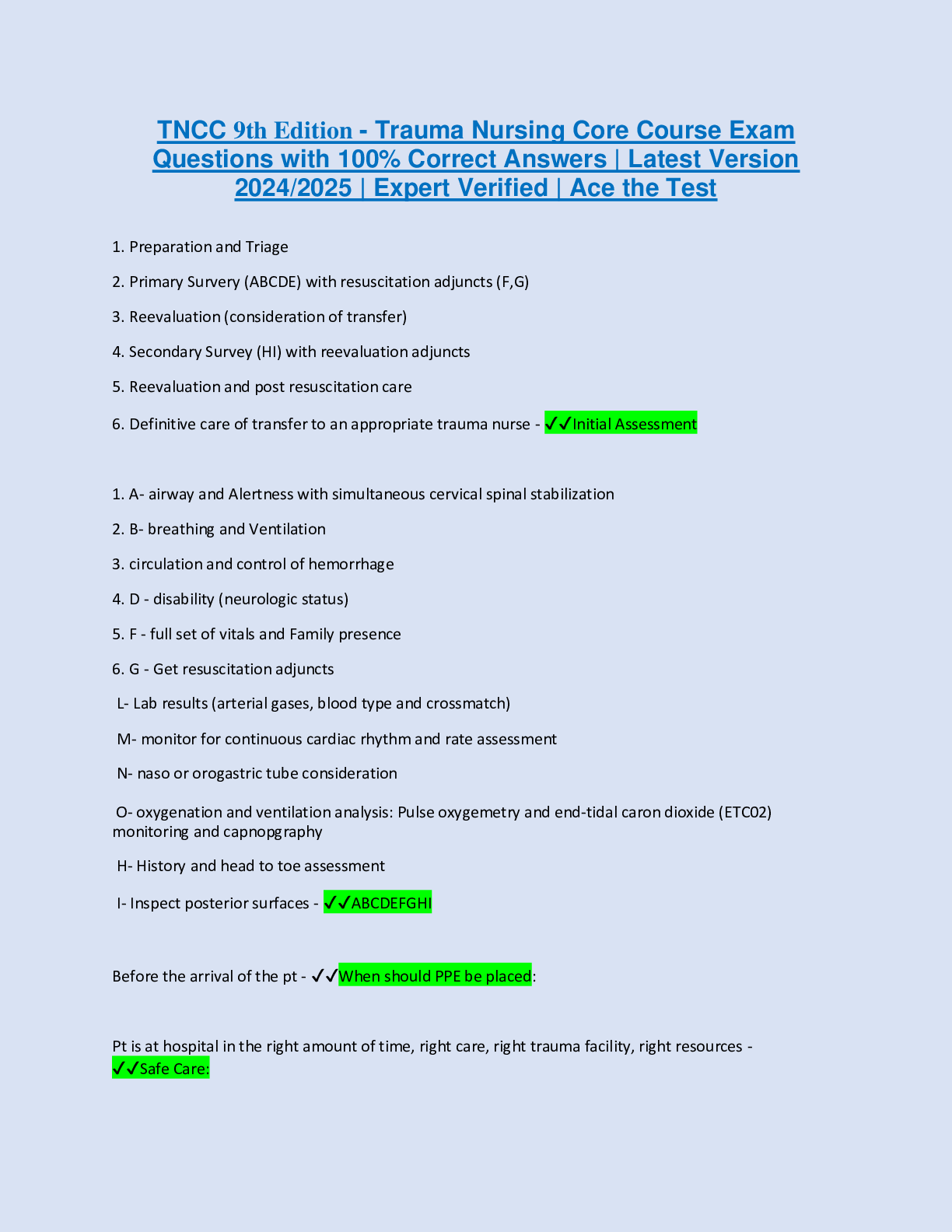








.png)

